

===============================================
Enjoy the slide show below from Phyll Robson of the TFT Foundation UK, on her trip to Uganda:
===============================================
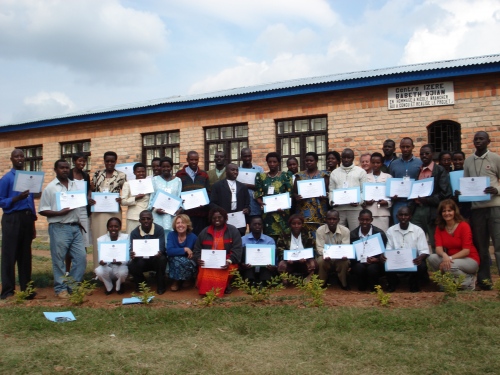
The TFT trauma relief technique is very different. Yes, it looks strange and seems just too simple to be able to do much of anything. And yet, 30 years of testimony from thousands of people around the world show it to be revolutionary in its ability to help people achieve emotional freedom and peace of mind. Simply put, its effectiveness feels like a miracle as its speed and power defy all expectations and previous experience.
On top of that, the algorithms, which were derived through diagnosis, are available to anyone, regardless of education, nationality, age, race or creed. And thanks to the internet–it is FREE!
Millions of people worldwide suffer from violence, natural disaster, illness, divorce, loss of job, home or loved ones, etc. Such trauma has a severely debilitating effect on one’s life as an individual, as a community member and as a world citizen. It is the goal of TFT Foundation to reduce suffering through the powerful tool of TFT. It is also our stand that relieving the effects of trauma—the fear, grief, guilt, stress, anger, hatred–frees the individual and opens the heart, facilitating peace within and among communities.
The story of TFT and the Rwandan elder is an example of this type of transformation. During the genocide, this gentleman had seen his family brutally murdered and was attacked and left for dead himself. For years he had endured severe emotional and mental torture, even dizziness and falling. In response to the profound relief he experienced from TFT, he offered to take three or four orphans into his modest home!
Using TFT to relieve the effects of trauma can open people to peace, compassion and community. It is the intention of the TFT Foundation–and this blog–to make trauma relief available on a global scale!
Just give it a try by following the written instructions and/or the video demonstration. It takes only a few minutes. If it doesn’t work for you, or it works only partially, ask questions by posting a comment. We promise to answer as soon as possible. You can also visit the TFT membership directory for a list of TFT practitioners for further consultation.
Our world-wide projects include PTSD research in Africa, humanitarian efforts in disaster areas, and education in areas of need from poverty, trauma, and disease.
CLICK HERE to find out about our current and upcoming projects.
CLICK HERE to read about our previous projects over the past few years.

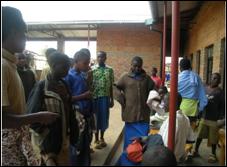
We have received a request from Father John Mary Vianney, a priest of Byumba Catholic Diocese in the northern district of Rwanda. He heard from a seminarian, KATANGA Raphael (salesian of Don Bosco) about our work with traumatized people.
Father Vianney has asked for us to come to his diocese as there are many cases of children and youth who suffer from HIV/AIDS, loss of family, disabilities, genocide survivors and other. They have requested a team come in July 2009 to train and treat. Dr. Caroline Sakai is willing to go in late July and stay two weeks. They want to have us train about 30 people who can then assist others in their community. The people of Byumba at NYINAWIMANA have built a center that they call the IZERE Center. The word seems to mean peace and reconciliation.
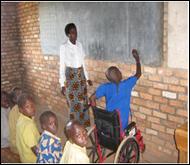 Those who have been trained will treat others at the IZERE Centers in the other communities. They want us to also treat some cases of trauma at the IZERE Center. They have about 300 people that they would like treated but we may have to limit the amount of people treated during depending on how many ATFTF Trauma Relief therapists are deployed.
Those who have been trained will treat others at the IZERE Centers in the other communities. They want us to also treat some cases of trauma at the IZERE Center. They have about 300 people that they would like treated but we may have to limit the amount of people treated during depending on how many ATFTF Trauma Relief therapists are deployed.
They propose to make a small ATFT group formed of the 30 newly trained therapists who will treat others at the IZERE Center. They want us to supervise the newly trained therapists as much as possible before our departure.
Goal: To improve on the lives of the people affected by genocide, war, poverty and physical handicaps.
1. Begin a program focused on treatment of the effects of trauma caused by genocide and psychological effects of poverty and being physically handicapped.
2. To identify people affected by genocide (trauma cases), poverty (orphans, widows, handicapped people, and traumatized people) and to group them according to their needs.
3. Sensitivity training and education aimed at creating peace, forgiveness, unity, reconciliation and confidence among neighbors, and to cultivate a spirit of collaboration and mutual help.
-To provide physical and emotional treatment to all people
-To continue training; Members of the IZERE Centre will train and supervise others
-Counseling
– Reduction in the cases of trauma
– Increased knowledge about trauma and how to
diagnosis it.
– Ease education of traumatized children
– Good relationships among people (peace, forgiveness, reconciliation).
Suzanne Connolly TFT-Adv
*Note: ATFT Foundation is an IRC Section 501(c)(3) public charity to which contributions are deductible for federal (USA) income tax purposes in accordance with the provisions of IRC Section 170.

By Paul Oas, M.Div., PhD., TFT Dx
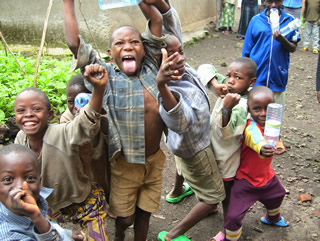 |
The “Street Children” of the El Shaddai Orphanage in Kigali, Rwanda |
In April of 2006, a 10 member Mission Team traveled under the sponsorship of the ATFT (Association for Thought Field Therapy) Foundation, www.TFT.org., to Rwanda and the Congo to do research and provide trauma therapy and training. They used and taught the revolutionary process of trauma relief developed by Dr. Roger Callahan, author of “Stopping the Nightmares of Trauma.” (For a brief synopsis of the TFT process, see www.TFTrx.com.)
Below see the heart-opening experience of the ATFT team being welcomed by 400 singing orphans. You can also see other ATFT videos on YouTube.
The ATFT Trauma Relief Team being welcomed by 400 singing orphans.
Their focus was primarily on the 400 “Street Children” of the El Shaddai Orphanage in Kigali, Rwanda, “home” for those orphaned by the 1994 genocide and subsequent AIDS and poverty.
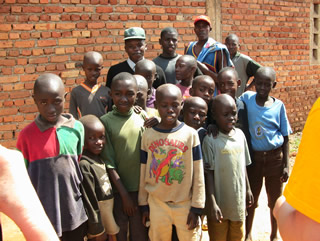 |
| El Shaddai Orphanage, “home” for those orphaned by the 1994 genocide and subsequent AIDS and poverty. |
The Team was co-sponsored by Christ Lutheran Church in San Diego, who has raised $35,000 of the $48,000 pledged to feed and bed the 400 orphans for a year. Five of the Team were from CLC. (www.Christpb.org).
This team’s mission statement was: “To help create healing and stability in Rwanda by using Thought Field Therapy to heal the wounds of trauma and by training Rwandans and the Congolese to use TFT to help their fellow citizens heal the wounds of the past and move forward to create a strong, peaceful and healthy nation.”
The goals of the 2006 mission team included the following:
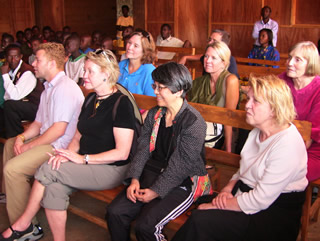 |
| Our travel-weary volunteers, captivated by the singing orphans. |
What motivates 10 Americans from the ages of 29-75 to leave jobs, practices, spouses, children and the comforts of home to travel thousands of miles to the heart of Africa – a country replete with war, genocide, corruption, disease, poverty and seeming hopelessness?
You will have to ask them!
I can only share some observations.
In selecting the team, these were the qualities I initially looked for and found:
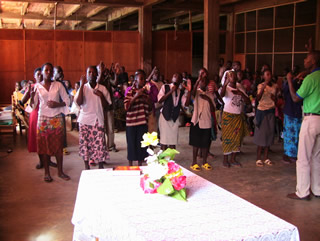 |
| Flowers, smiles, song and dance greeted our tired team upon their arrival. |
On the road, April 10:
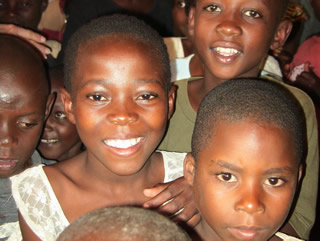 |
| Smiling faces and inquiring eyes, filled with hope for what we may be able to do.
|
Toss in 2 sleepless nights on crowded airlines by team members attempting to bivouac in Nairobi from Hawaii, LA, Phoenix, DC and Kuait, a flight cancellation from Nairobi, Kenya to Kigali, Rwanda, and arriving “shower less” and disheveled 4 hours behind schedule.
Reluctantly we honored the insistence of Pastor Peter Ilungalutum, the Director of the El Shaddai Orphanage, to “stop by” and be welcomed by 400 children orphaned by the 1994 genocide, AIDS and poverty.
We were bounced and whisked to an abandoned warehouse where these hundreds of former “street children” had been waiting 4 hours to welcome our arrival.
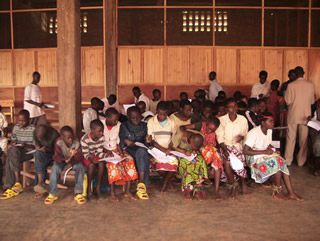 |
| Genocide victims, both young and old, working hard to fill out their PTSD questionnaires. |
What we experienced then was impossible to describe without tears welling up again. It was for me the signature experience of our mission. As 10 weary travelers descended from packed Land Rovers into a cave like entrance to the warehouse, voices of 400 orphans singing at the top of their lungs was overwhelming in its stark contrast to what we anticipated.
We saw faces beaming with joy and animation, eyes wide with excitement. For over an hour they mesmerized us with singing and dancing. Like Ravel’s “Bolero,” the beat and dance escalated until our “Raggedy Ann” travelers were “seduced” onto their feet – joining hearts and feet in a crescendo of connection.
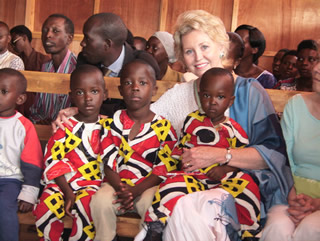 |
| Dottie Webster sharing Easter Sunday with the orphans. |
We were there to “heal” them? This experience alone was worth the “price of admission.”
With but an hour to travel to our lodging, splash water on our faces, run a brush through hair – most were on time for our 4:00 p.m. staff meeting with our local hosts and Embassy volunteers.
The Presbyterian Guest House was our domicile for the next two weeks. There were clean rooms, mosquito net draped beds, showers and bath. (Electricity and hot showers were sporadic, but “shower sharing” rescued us.)
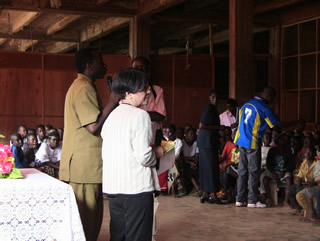 |
| Caroline Sakai explaining about the TFT therapy and study. |
Tasks at hand:
Due to typical African communications, Suzanne Connolly’s training of 35 psychologists, pastors and teachers was postponed for 10 days.
This allowed time for Caroline Sakai to rally the team to the task of therapy and research. Having recently returned from two deployments to New Orleans and Green Cross Certification, Caroline launched into the formidable details involved in adequately translating our PTSD approved testing instruments into Kinyarwandan and receiving approval by its author. This became an amazing team effort requiring many trips to the Internet Café until appropriate and adequate translations were acceptable and in place.
The team worked till late at night assembling research and training materials. Days were spent in testing and treating as many children and staff as possible.
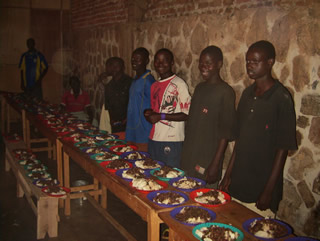 |
| Additions to daily protein and nutrition were welcomed. |
Meanwhile, 3 of the team, Carl Johnson, Beth Bates and Paul Oas left for the Congo and Northern Rwanda to provide training and follow up continuing education for last year’s trainees in Goma and Ruhengeri.
Now, time for a weekend break!
Six of our team journeyed to the mountains separating Rwanda from Uganda and the Congo to track down the elusive Silverback Gorillas of “Gorilla’s in the Mist” fame.
Their mountain climbing trek through thick jungle rewarded them by a literal “brush” with the gorillas and left them rain soaked and mud caked as ecstatic reincarnations of “Diane Fossey.”
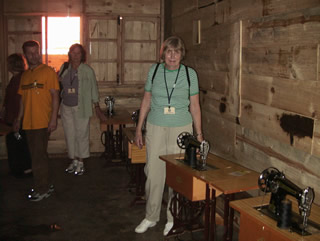 |
| We taught the children to “sew” with the donated machines. |
Our final week was no less exciting and rewarding. 35 students arrived from the Congo and various parts of Rwanda for the two-day training in TFT. (Due to the extreme poverty in Africa, it was necessary to subsidize students for travel, food, lodging and training.)
The training was led by Suzanne Connolly, a seasoned tutor and traveler. Since January, she already had two training deployments prior to Rwanda: New Orleans and Kuwait.
With 6 assistants and a translator, the students not only learned the basics, they also experienced relief from their own pent up traumas, which helped solidify their education and experience.
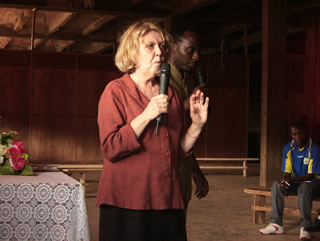 |
| Suzanne Connolly leading the TFT Algorithm Level training for the local community. |
The remainder of our time was spent in treating as many of the orphans and staff as possible and to ensure that protocols for research follow up were in place.
Farewells were heart wrenching, as affection-starved children were once again being “abandoned.” Clothes were drenched with intermingled tears as orphans clung to new friends and “surrogates” from America.
It was now impossible to determine — who had healed whom?
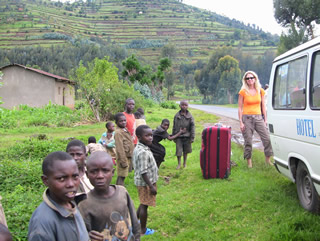 |
| The sad good-byes. |
